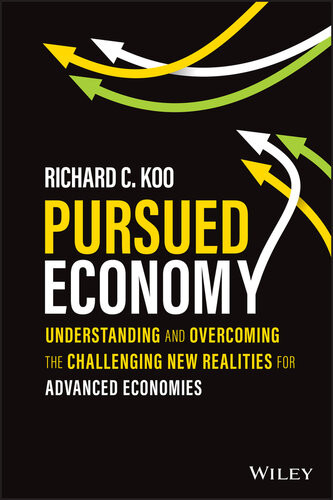

Most ebook files are in PDF format, so you can easily read them using various software such as Foxit Reader or directly on the Google Chrome browser.
Some ebook files are released by publishers in other formats such as .awz, .mobi, .epub, .fb2, etc. You may need to install specific software to read these formats on mobile/PC, such as Calibre.
Please read the tutorial at this link: https://ebookbell.com/faq
We offer FREE conversion to the popular formats you request; however, this may take some time. Therefore, right after payment, please email us, and we will try to provide the service as quickly as possible.
For some exceptional file formats or broken links (if any), please refrain from opening any disputes. Instead, email us first, and we will try to assist within a maximum of 6 hours.
EbookBell Team

4.3
78 reviewsIn Pursued Economy: Understanding and Overcoming the Challenging New Realities for Advanced Economies, celebrated economist and thought leader Richard C. Koo dives deep into the failure of traditional economic solutions to address the economic and social problems of post-Great Recession and post-pandemic economies. Starting with the original concepts of balance sheet recessions and global competition for capital, the author explains why the Great Recession lasted for so long and why well-intentioned policies that worked so well in the past are no longer working today.
Readers will discover that advanced economies moved from what the author calls the "golden era" to the "pursued era" of economic development long ago, but the policy debate in these countries continues to be informed by golden era assumptions that are no longer relevant but are still taught in universities. That mismatch has led to an over-reliance on monetary policy and an under-reliance on fiscal policy that are distorting economies and worsening inequality in a profoundly transformed world.
With many real-world examples from the author's extensive involvement in the policy debate on economic, banking and trade issues in several countries, including the U.S., the book describes the correct policy mix in the pursued era as distinct from that in the golden era. It also explains the challenges central banks face in fighting inflation after a decade of over-reliance on monetary policy that flooded the world’s economies with unprecedented liquidity.
Instead of simply assuming the existence of "trend growth rates", this book tackles the issue of economic growth head-on so as to elucidate the symmetry between the drivers of growth and the drivers of recession. It also argues that the fundamental disconnect between free trade and free capital movements must be addressed in order to maximize the gains from globalization while minimizing its costs. Written in simple language and with a great sense of urgency,